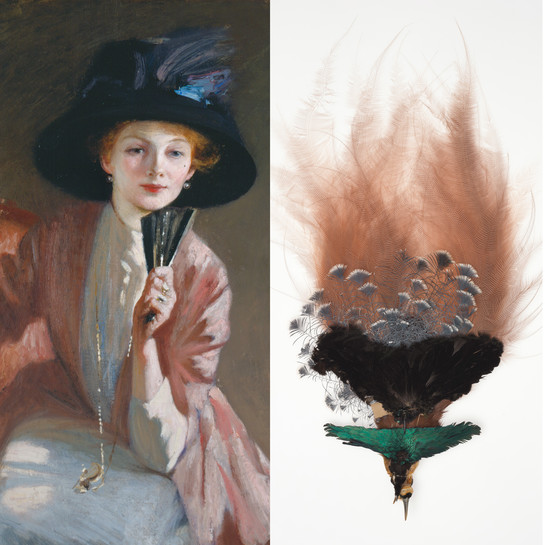Lucy Kemp-Welch
England, b.1869, d.1958
Read more about this artist on WikipediaIn the Orchard [also known as Sunlight through the Leaves]
- 1904-1905
- Oil on canvas
- Presented by the Canterbury Society of Arts, 1932
- 1130 x 1440mm
- 69/564
Tags: animals, families, grasses (plants), horses (animals), orchards, pairs, sunlight, trees
Lucy Kemp-Welch launched her career as an animal painter while in her twenties, and painted this work not much later when she took over the running of the art school where she had studied. Operating from behind “a very interesting house in the old High Street” in Bushey village near London, she became the first woman principal of a British art school to teach both male and female students. Her own studio, where she made this sun-drenched painting of a horse and foal, was built in a paddock where she kept a couple of New Forest ponies, and its tall glass annexe and grass floor allowed her to work from her animal models regardless of the weather. Kemp-Welch became the most famous horse painter of her day.
Ship Nails and Tail Feathers, 10 June – 22 October 2023
Exhibition History
Turn, Turn, Turn: A Year in Art 29 July 2019 – 8 March 2020
British artist Lucy Kemp-Welch launched her career as a leading animal painter while still in her twenties, and painted this work not much later, in 1905, when she also took over the running of the art school where she’d studied. Operating from behind “a very interesting house in the old High street” in the village of Bushey near London, she became the first woman principal of a British art school to teach both male and female students. Her own studio, in which she made this sun-drenched painting of a horse and foal, was built in a paddock, where the artist kept a couple of New Forest ponies. It had a tall glass annexe with a grass floor, so she could study her animal models regardless of the weather outside. Kemp-Welch became the most famous horse painter of her day, and also made paintings for a popular version of the book Black Beauty by Anna Sewell.
(Turn, Turn, Turn: A Year in Art, 27 July 2019 – 8 March 2020)
The Weight of Sunlight 16 September 2017 - 16 September 2018](http://christchurchartgallery.org.nz/exhibitions/the-weight-of-sunlight)
British artist Lucy Kemp-Welch launched her career as a leading animal painter while still in her twenties. She painted this work not much later, in 1905, when she also took over the running of the art school where she’d studied under Hubert von Herkomer. Operating from behind ‘a very interesting house in the old High street’ in the village of Bushey near London, she became the first woman principal of a British art school to teach both male and female students. A 1901 visitor described her work space. The studio is reached through the garden, and is built in a paddock, in which the artist keeps a couple of New Forest ponies … The striking feature of the studio is the large glass annexe, somewhat like a tall conservatory, with grass, instead of gravel or tiles, as a floor. In this annexe Miss Kemp-Welch can have her animal models, and study them as well as she could out in the open, without having to consider the inclemency of the weather … there are long spells when working out of doors is impossible in England…
Ape To Zip: Adventures in Alphabet Art, 13 May 2005 – 8 October 2006
In the exhibition Ape to Zip this work was used for the letter F and was displayed with the following label:
FOAL Lucy Kemp-Welch did this oil painting of a horse and its foal in the English village where she lived. She always loved drawing horses, even when she was a little girl, and became the most famous horse painter of her day. She also did paintings for a popular version of the book Black Beauty by Anna Sewell.








